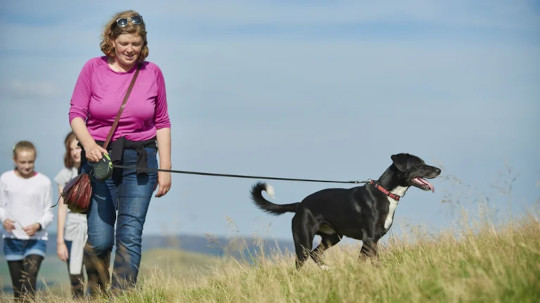
Walking your furry friend can be a fantastic way to get some exercise and spend time with your four-legged companion. However, new research from Johns Hopkins University has highlighted the growing number of injuries related to leash-dependent dog walking, emphasizing the need for dog owners to be informed of the potential risks.
The study, published in Medicine & Science in Sports & Exercise, focused on the epidemiology of injuries related to leash-dependent dog walking among adults presenting to US emergency departments from 2001 to 2020. The researchers found that an estimated 422,659 adults sought treatment in US emergency rooms for injuries related to leash-dependent dog walking during this time, with the annual incidence of injuries increasing more than four-fold.
The Findings Are Significant
These findings are significant given that nearly 53% of US households own at least one dog, according to a 2021–2022 national pet ownership survey. Additionally, dog ownership increased significantly in recent years during the COVID-19 pandemic. While dog walking is a common daily activity for many adults, few studies have characterized its injury burden until now.
The study's lead author, Ridge Maxson, a third-year medical student at Johns Hopkins University, said the team saw a need for more comprehensive information about these kinds of incidents. "Despite our findings, we also strongly encourage people to leash their dogs wherever it is legally required," Maxson said.
So, what were the most common injuries related to leash-dependent dog walking? The study found that finger fracture, traumatic brain injury (TBI), and shoulder sprain or strain were the top three injuries. TBIs were the second most common injury among adults treated in US emergency rooms for injuries related to walking a leashed dog.
The study also found that women and adults aged 65 and older were more likely to sustain serious injuries, such as fractures and TBIs, than people in other demographic groups. This is a crucial point that dog owners, especially older adults and women, need to be aware of when walking their dogs.
Most injuries occurred due to falling after being pulled by, tangled in, or tripped by the leash connected to a dog they were walking. This emphasizes the importance of appropriate leash selection and use, ensuring the dog is properly trained and socialized, avoiding distractions while walking the dog, and wearing proper footwear and clothing to prevent falls.
The study's senior author, Edward McFarland, director of the Division of Shoulder and Elbow Surgery at Johns Hopkins Medicine, said clinicians should be aware of these risks and convey them to patients, especially women and older adults. "We encourage clinicians to screen for pet ownership, assess fracture and fall risk, and discuss safe dog walking practices at regular health maintenance visits for these vulnerable groups," McFarland said.
Overall, walking your dog is a healthy and enjoyable activity that can benefit both you and your furry friend. Still, it's essential to understand the potential risks and take appropriate precautions to minimize injury risk. By taking steps to prevent injuries while walking your dog, you can continue to enjoy this daily activity without worrying about the possibility of getting hurt.
What Precautions Are Needed
So, what can dog owners do to prevent injuries while walking their dogs? Firstly, it's crucial to use an appropriate leash for your dog's size and behavior. For example, retractable leashes can increase the risk of injury as they give the dog more freedom to pull and cause accidents. A fixed-length leash, preferably made of sturdy material, can help prevent falls and other injuries.
It's also essential to ensure your dog is well trained and socialized to prevent any aggressive behavior towards other people or dogs. Proper training can also help prevent falls and other accidents caused by an unruly dog.
Avoiding distractions while walking your dog is also critical. This means putting your phone away, not listening to music, and keeping your eyes on your surroundings. Paying attention to your dog's behavior can help you spot any potential hazards, such as other dogs or uneven ground, and avoid them.
Wearing proper footwear and clothing can also help prevent falls and injuries. Comfortable shoes with good traction and appropriate clothing for the weather can help keep you safe while walking your dog.




























